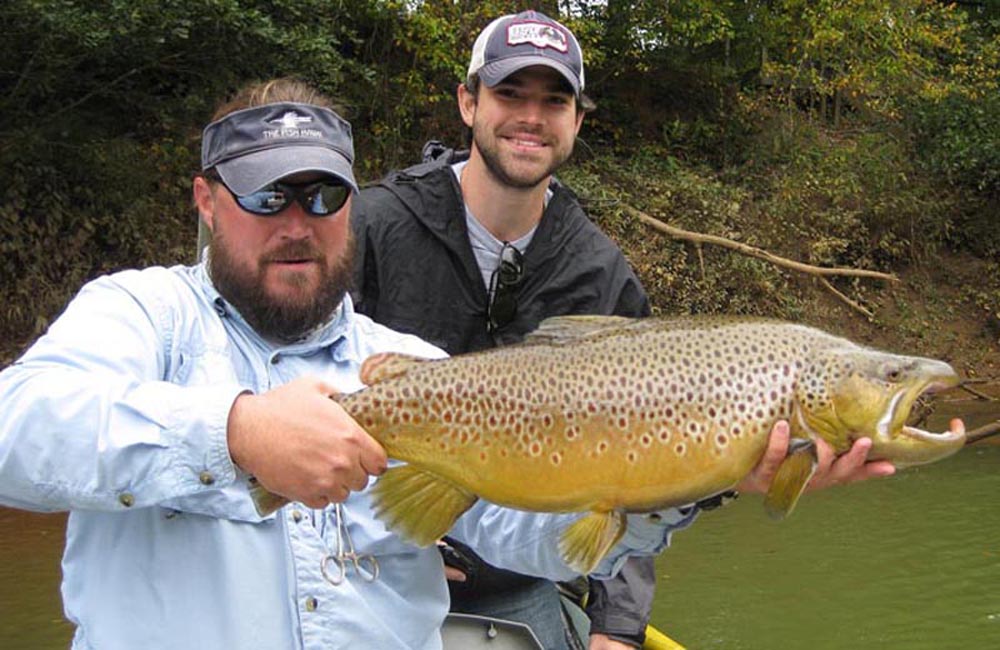
A Chattahoochee River wild brown trout [Salmo trutta] on a big, articulated trout streamer named Chewie, a Bryson original. Alaska, Georgia, Tennessee, and North Carolina fishing guide and casting instructor Chad Bryson with a happy client. Image credit Chad Bryson. Was it the CHEWIE we knew in Star Wars? Bryson is one of the best fly fishing guides in the Southeast.
Become a more proficient fly fisher, learn to tie flys
By Henry Clement
You probably began fly-tying or plan to begin fly-tying to save money. Good luck with that. You’d need to be so good that you have a YouTube presence, a following, and sponsors and have devoted much of your work life to the effort.
Unless you tie professionally, tying will cost you money. Fortunately, except for a good vise and essential tools, you will spend only a few bucks this month, a few the next, and so on. Then, you put away your $50 beginner kit because the vise jaw broke and spend about $300 on a great rotary vise and top-notch tools. Now you’re hooked.
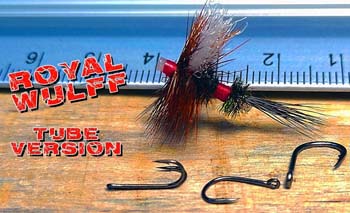
The Royal Wulff is one of the most famous and influential dry flies, which speaks of its enormous versatility and application in the fishing of many species worldwide. Its tube version improves the effectiveness of this great fly. The photo is a screenshot—Ruben Martin holding the tube Royal Wulff he just tied.
Tying
Tying flies for freshwater, brackish water, or saltwater game fish will teach you more about aquatic life, forage fish, and the predator fish you’ll pursue than any tying could possibly do for improving your catch stats. Certainly, learning more and fishing more successfully than most, if not all, of your angling contemporaries.
Perhaps, more than anything else about tying flies, you will become a better fly fisher. Not for the reason you told yourself at the outset of tying, catching more fish ‘just’ because of it. No, it will be because you learned about tides and moon phases, food sources, spawning, baitfish migrations, seasons, and water temperature. Perhaps, too, you will fish more often.
A freshwater fly fisher pursuing trouts and bass will become a better angler because they know about aquatic insect life and hatches, terrestrials, field rodents, the importance of water temperatures, and their seasonal influences.
Tying flies will also naturally boost or awaken your creative instincts
There is nothing quite like tying a dozen flies of your invention that get greedily eaten upon presentation. In the scheme of things, that small moment will be replayed like a game-winning shot in any game for the rest of your life.
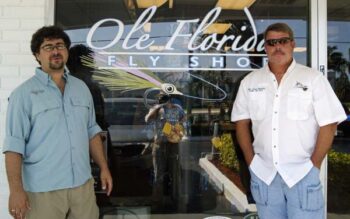
Darren, on the left (proprietor of Ole Florida Fly Shop) and Capt. Scot Hamilton poses for Grant Gisondo’s post-spinner lecture.
Buying flys
There are great fly inventories at most fly shops. Occasionally, you will encounter fly bins, especially at big box stores, that have flies that do not swim properly (flop on their side or spin), fall apart (unravel), are poorly proportioned, or are too heavy to cast.
Another reason some stop buying store-tied flies is that the offerings do not match the destination you’re planning to fish.
On an economic basis, some anglers balk at the high prices of store flies. Good flies tied by true professionals are never cheap.
A lawyer friend came to me and asked me to tie some Atlantic salmon flies (tube Bombers and tube-tied classic Atlantic salmon patterns) for a trip to NL, Canada. I needed some tax advice, so we cut a deal. He and his wife paid $0 for 36 salmon flies and a supply of hooks exceeding 36 and whatever they need on their home waters through the fall of this year. Probably another 30 or so tube flies of my choice.

Daniel W. Galhardo, founder of Tenkara USA, and Masaki Nakano [out of view] go Tenkara fly-fishing in the Sierra Nevada Mountains. Tenkara is the traditional Japanese method of fly-fishing. Sakasa kebari fly has a reverse hackle, with the hackle facing away from the hook’s bend. It’s simple compared to Western-style flies and doesn’t resemble any particular insect. However, when underwater, the hackle fibers pulsate to mimic lifelike movement and attract fish.
You are naturally dexterous
Even if that sub-title is true, it will not stop you from wandering on the couch if you should start tying your own flies. An easy entry is your nearby fly shop. They almost always offer a series’ of fly-tying classes. A second way of going from thinking of tying to tying is Goggling the internet, but you could go down any number of Googled rabbit holes. To avoid that pitfall, take a look at the following recommendations.
Lastly, the most unfortunate part of learning about fish, fly fishing, riverine, coastal marsh, and blue water habitats is that Congressional types are guided, like SCOTUS’ men, by dark money and the comforts they provide. It will be a brutal awakening to find (maybe) your hero is a grifter and no friend of public lands or clean water.
Qualifier: No arrangement with any person or persons, product, or company is recommended below. Again, the best advice is to get up close and personal with your local fly shop and learn from their fly-tying classes.
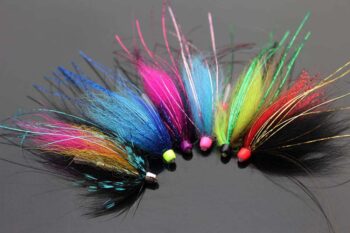
Assorted Colorful Copper Cone Head Tube Fly Set for Salmon Trout Steelhead Fly Fishing Flies
Another way to get on point
- Buy the book By Steve Hudson titled A Structured Course in Fly Tying
- Brian Flechsig’s Mad River Outfitters is one of the best channels for new anglers to learn everything from beginner fly tyers to casters and riggers.
- The following are YouTube tyers who could tie a fly in the dark and make it worth fishing, and as importantly, they are all talented instructors.
- Ruben Martin [see NOTE 2]
- Tim Flagler
- Kelly Galloup
- Jay Nicholas
- Intheriffle
- Peter Charles
- Charlie Craven
- Davey McPhail
- Matt O’Neal
- Phil Rowley
NOTE: There are many more qualified fly tyer/angler/instructor out there in the vast world of the internet. However, the tyers listed preach learning in a way that promises—now I get it, and that’s why they are listed.
NOTE 2: Although most listed tyers have a video or two on tube flies, only Ruben Martin teaches using trout-size nymphs, dry flies, and streamers as tubes. Click ‘TUBE FLIES’ when you link to his site.
BTW, tube flies have a lot of benefits that hook-tied flies are incapable of copying. There’s no special skill needed for tying tube flies; a vise adaptor is all that’s needed ($18).
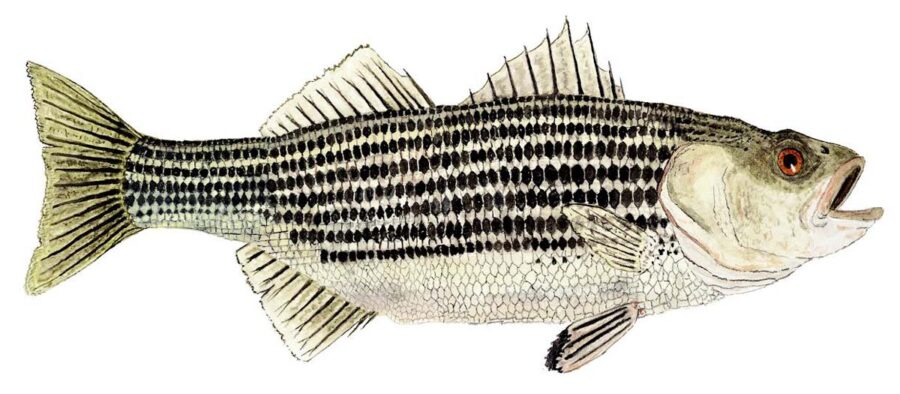
Thom Glace, the award-winning watercolorist’s commissioned striper, is one of the best illustrations of Morone saxatilis. Best fall angling eastern tip of Long Island, New York. Contact Capt. Andrew Derr ~ long island on the fly


